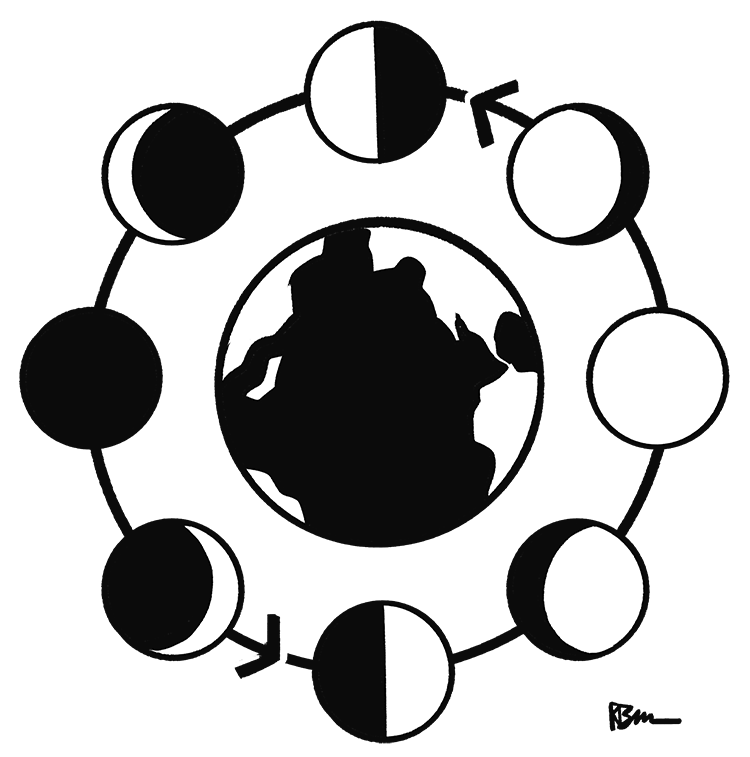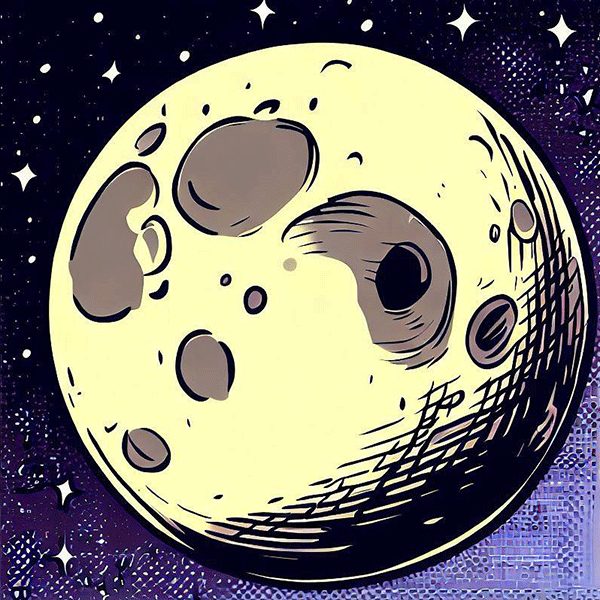The Moon: Our Cosmic Best Friend!
Can you imagine a time before your oldest grandparent was even born? That’s when our moon came to be, about 4.5 billion years ago! It happened in a way that could be straight out of a superhero movie: a huge space rock as big as Mars decided to crash into Earth. KABOOM! Bits and pieces flew everywhere, but they ended up sticking together to make the Moon.
The Moon’s Supercool Dance
Our moon is a pretty good dancer. It spins around while it moves around Earth, kind of like a ballet dancer doing a twirl. And guess what? It takes the same amount of time for the moon to spin once as it does for it to go all the way around Earth – about 27.3 days. That’s why we always see the same side of the moon from Earth!
Lunar Eclipses: Space-Time Hide-and-Seek
A lunar eclipse is like a giant game of hide-and-seek in space. It happens when Earth gets in between the Sun and the Moon, throwing a shadow over the Moon. But remember, this only can happen when the Moon is full. There are three types of these cosmic hide-and-seek games:
- Total Lunar Eclipse: The whole Moon passes through the darkest part of Earth’s shadow. It’s like the Moon decides to hide in a dark room.
- Partial Lunar Eclipse: Only a part of the Moon enters Earth’s shadow, kind of like it’s hiding behind a curtain.
- Penumbral Lunar Eclipse: The Moon passes through the lighter part of Earth’s shadow. It’s often hard to spot because the Moon only dims a bit, like turning down the brightness on your phone.
Tides: The Moon’s Magic Show
Have you ever seen the sea level go up and down? That’s the sea putting on a magic show called tides, thanks to the Moon and the Sun’s gravity, and Earth spinning around. Each day we get two high tides and two low tides. The highest tides, known as spring tides (even though they have nothing to do with the season), happen when Earth, Sun, and Moon are all in a straight line. The lowest tides, called neap tides, happen when the Sun and Moon form a right angle.

Phases of the Moon
As the Moon dances around Earth, we see different parts of it lit up by the Sun. This makes the Moon look different at different times, which we call phases:
- New Moon: The Moon is between Earth and the Sun, so we can’t see the part that’s lit up.
- Waxing Crescent: A small part of the Moon is lit up and starts to get bigger.
- First Quarter: Half of the Moon is lit up.
- Waxing Gibbous: More than half of the Moon is lit up and keeps getting bigger.
- Full Moon: The whole face of the Moon is lit up.
- Waning Gibbous: The Moon starts to get smaller.
- Third Quarter: Half of the Moon is lit up.
- Waning Crescent: Only a small part of the Moon is lit up before it goes back to the New Moon phase.
The Moon, our nearest neighbor in the giant cosmos, has amazed people for centuries. From moving our ocean tides to lighting up our night sky, the Moon is always there, impressing us with its beauty and mystery.
